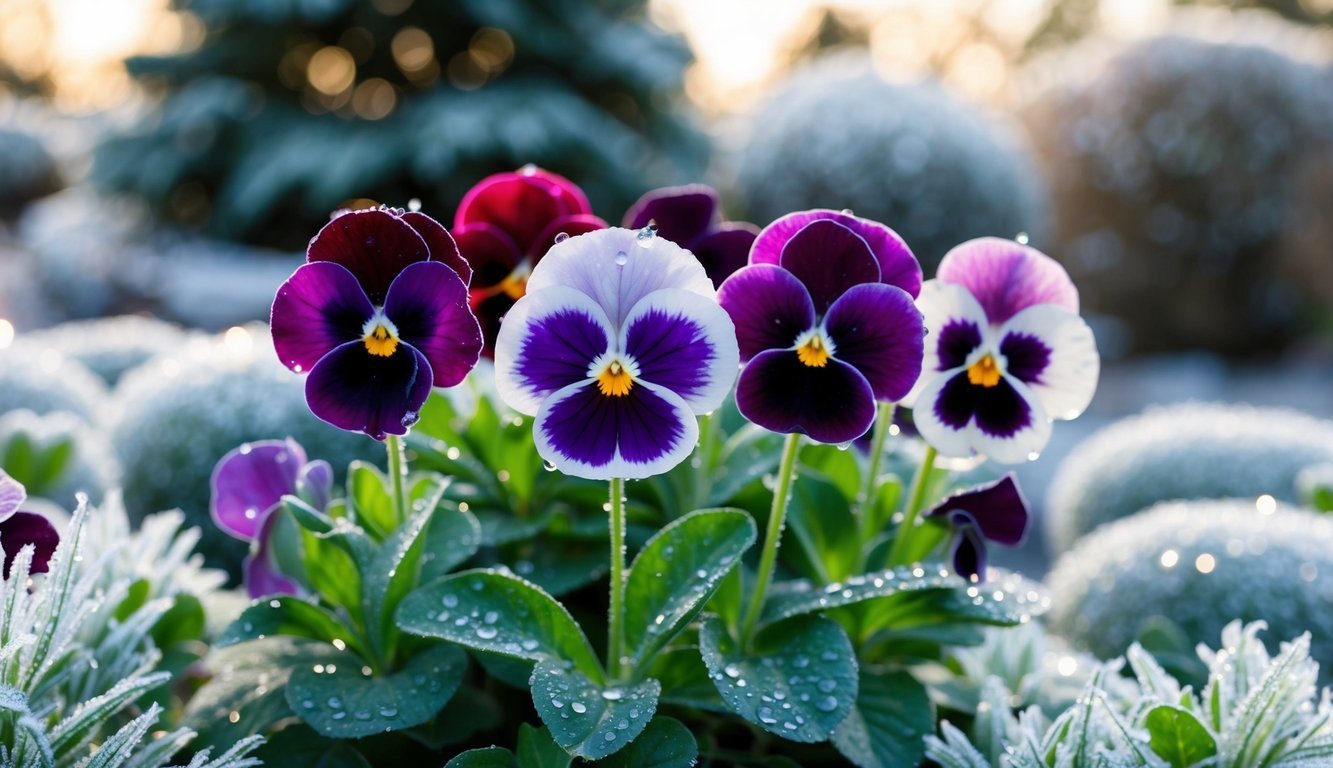
Understanding Winter Pansies
Winter pansies, also known as ice pansies, are a colorful choice for any garden.
They blossom in a stunning spectrum of hues, including blue, purple, red, and pink.
Scientifically referred to as Viola hiemalis, these resilient flowers have the unique ability to thrive during the cooler seasons of fall and winter.
In warmer areas (USDA zones 7 and 8, as well as some regions in zone 9), winter pansies can put on a non-stop floral display.
However, in regions with harsher winters (USDA zones 4, 5, and 6), they tend to flower predominantly in the fall, retreating into dormancy when temperatures drop significantly.
Planting Winter Pansies in Your Garden
To enjoy the beauty of winter pansies, choosing the right spot in your garden is crucial.
Look for an area that enjoys at least six hours of sunlight daily and features well-draining soil rich in organic matter.
The recommended space between pansies is about 7 to 12 inches.
In terms of timing, early spring or late summer are the prime planting seasons.
- Gently squeeze the pot’s bottom to release the pansy.
- Dig a hole deep enough to accommodate the roots and crown.
- Place the plant inside the hole.
- Fill in around it with soil, pressing down lightly.
- Water the newly positioned pansy thoroughly.
- Add a layer of mulch on top to help retain moisture.
Caring for Your Winter Pansies
Winter pansies require minimal upkeep, as long as they receive adequate sunlight and water.
Sunlight Needs
For optimal growth, ensure that these plants get at least six hours of direct sunlight each day or bright, indirect light indoors.
While they can survive in shaded areas, this typically limits their flowering potential and may result in no blooms at all.
Soil Preferences
Winter pansies enjoy well-draining soil that’s rich in organic material.
Water Requirements
These flowers prefer a consistently moist environment but should avoid standing water.
For container-grown pansies, be especially vigilant, as they may require more frequent watering.
Fertilization
To support healthy growth, apply a balanced fertilizer (15-30-15) every two weeks, focusing on the phosphorus for robust roots and vibrant blooms.
Temperature Tolerance
Winter pansies perform best in temperatures ranging from 40°F to 60°F. They can handle the cold well, but be cautious of severe frosts.
Container Gardening with Winter Pansies
Winter pansies thrive beautifully in containers, provided those pots have drainage holes.
- Fill the pot with soil, keeping the level just below the rim.
- Carefully remove the pansies from their original containers.
- Create a hole deep enough for the roots.
- Gently break up the root ball to encourage growth in new directions.
- Position the pansies, spacing them about 1 to 8 inches apart.
- Fill in around the plants with soil, pressing down lightly.
- Water the pansies generously to assist them in establishing roots.
- To protect them from harsh winter conditions, add a layer of mulch if you live in a cooler area.
Pruning for Continued Blooms
To keep your winter pansies flowering, pinch off spent blooms or cut the stem back using clean pruning shears.
Propagating Winter Pansies
To propagate winter pansies through cuttings, follow these steps:
- Fill small pots with high-quality well-draining soil.
- Cut stems just below a leaf node.
- Place the cuttings into the soil and position them in a brightly lit area, ensuring the soil remains moist.
- Once the roots have taken hold, move them into a sunny location.
Overwintering Considerations
Thanks to their hardiness, winter pansies typically need little help to survive the cold.
Identifying Common Issues
Even with their low-maintenance reputation, gardeners may encounter some typical problems:
- Pests
Keep an eye out for aphids and slugs, which may require monitoring and occasional intervention. - Leaf Coloring
If leaves turn yellow, it often indicates too much water, while brown or black leaves may suggest both overwatering or underwatering.
This guide provides all you need to successfully grow and nurture winter pansies, ensuring bursts of color brighten your garden throughout the colder months.
Source: Marthastewart

